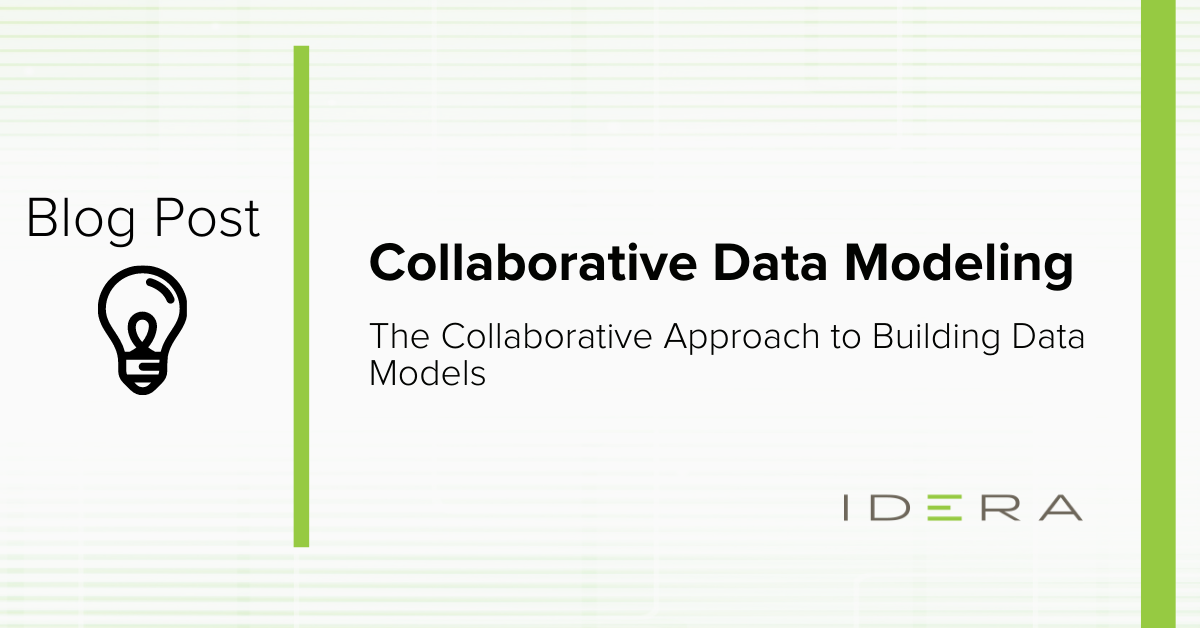For data-driven organizations, collaborative data modeling is essential for them to efficiently create and share data models.
For such organizations, data modeling is an initiative that can impact the whole organization. Therefore, the ability to involve stakeholders from around the enterprise in the data modeling process is a key-feature of modern data modeling tools.
- See also: What Is Data Modeling?
The volume of data with which businesses must cope to make decisions and maintain operations is growing daily. Enterprise information resources often encompass multiple input streams that deliver data using different and incompatible formats. Diverse data elements need to work together in the systems and processes that drive business productivity.
Businesses can struggle with maximizing the value of their data resources due to the complexities of their corporate structures. Terms and data definitions can vary based on the perspective or role of an individual, department, or business unit.
This can lead to misunderstandings that can negatively impact the ability to use the data productively throughout the enterprise. When the sales and shipping departments use different terms for exchanges and returns, it opens the door for mistakes to be made and requires additional communication to sort things out.
Internal misinterpretation of data elements can also impact customer interaction and result in lost business opportunities. Customers who were expecting a replacement product may end up getting a refund instead.
It’s hard enough to attract and retain customers in the hyper-competitive market we inhabit. Confusing customers or making them unhappy due to conflicts with company data definitions is not acceptable. Even if amends can be made and customer satisfaction restored, it will come with the costs of additional communication and wasted cycles that could have been used in more productive ways.
Benefits of Collaborative Data Modeling
Multiple steps need to be incorporated into the design and development of a viable data model that addresses the needs of the business. As data is typically used across the organization, to ensure the steps are completed thoroughly, the process has to involve stakeholders from around the enterprise. By improving data democratization and introducing a greater degree of collaboration in data modeling organizations can alleviate much of the miscommunication that can occur between different departments and lead to internal and external problems.
- Identifying business requirements is the necessary first step and demands input from all stakeholders. This includes management and executives as well as subject matter experts. Having a well-defined scope of the problem or process to be resolved gets the modeling project off to a good start.
- Establishing business domains is used to classify the functions and operations of the organization. All pertinent departments need to be included as they may use data elements that are intended to be shared in different ways. A major benefit of creating the data model is clarifying data definitions so everyone is working from the same playbook.
- The specific entities that will be part of this model need to be classified and agreed upon by members of the applicable business domains. For example, modeling a company’s eCommerce systems will require considering customers, products, warehousing, and delivery procedures at a minimum. The attributes of each entity that are important for the model also need to be specified in this step.
- Defining the relationships between the entities in the model is the next step in the process. This is another example of why it is critically important to have a diverse selection of stakeholders involved in developing the data model. Insight into hidden entity relationships may be obvious to members of some business domains while remaining invisible to others. Here is where those discrepancies can be resolved and a unified approach adopted for the model.
As you can imaging from looking at the various components of a data model, the opportunity exists for modifications to initial decisions regarding entities and relationships as the project matures and additional considerations are raised by stakeholders. Creating a data model is a collaborative effort shared by many individuals.
Collaborative Data Modeling Requires the Right Mindset and Tools
To be effective, collaborative data modeling requires both the right corporate mindset and data modeling tools that provide the right kind of functionality to support the initiative.
Departments, teams, and individuals need to be willing to compromise at times to further the common goals of the project. In the case of a data model, this may manifest itself in adopting new data definitions or altering the focus to include alternative entity relationships.
As a best practice, organizations serious about a data-driven strategy should invest in collaborative tools for data modeling.
IDERA’s ER/Studio Enterprise Team Edition offers organizations an application that enables the collaboration between business users and IT professionals to improve the way in which data is used by all parties. The tool is designed for building enterprise data models. Features such as automatically applying naming standards to data models and the shared model repository facilitate the collaboration that is needed to implement data models that work.
An informative IDERA video that demonstrates how ER/Studio Enterprise Team Edition promotes enterprise collaboration with examples that illustrate the application’s feature set. It’s a little under 15 minutes which is much less time than you will spend trying to get that customer refund fiasco resolved. Take a look at how ER/Studio can help your organization develop data models that solve real business problems.

